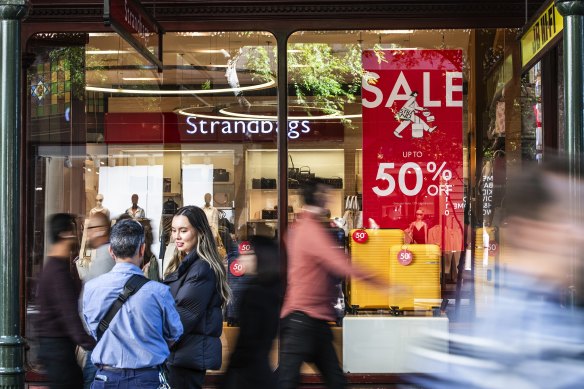Australia’s cost-of-living squeeze is finally easing
By Matt Wade
It’s the news we’ve all been waiting for: Australia’s cost-of-living squeeze is finally easing as fewer consumers report they are under acute financial stress and a growing share expect their household budgets to improve in the year ahead.
Cost-of-living pressures caused by elevated inflation and higher interest rates have been at the top of voters’ list of worries for more than two years, opinion polls show.

A growing share of consumers expect their personal finances to improve in the year ahead.Credit: Steven Siewert
But consumers are gradually becoming more optimistic about the economy and the health of their personal finances.
A new survey shows 30 per cent of respondents now believe their financial position will improve in 12 months – up from 24 per cent a year ago.
An above-average share of those who are university-educated (38 per cent) and have a job (36 per cent) were optimistic their finances would improve over the coming year, according to the Dye & Durham Australian Market Pulse, a quarterly survey of economic trends conducted by pollster Resolve Strategic. The proportion expecting an interest-rate increase this year fell from 48 per cent in June to 35 per cent in October.
“The survey shows the personal financial situations for a growing number of Australians have been steadily improving since last December,” said Dennis Barnhart, managing director of Dye & Durham Australia, a legal technology company.
Those on low and fixed incomes were more pessimistic – only 12 per cent of retirees expect their finances to improve in 12 months.
A separate survey released by National Australia Bank this month also showed cost-of-living pressure beginning to abate. The proportion of households reporting “very high” cost-of-living stress fell to 29 per cent during the last quarter, down from a nine-year high of 33 per cent last year.
The NAB survey’s overall measure of cost-of-living stress fell to its lowest level since the first quarter of 2022 – just before the Reserve Bank lifted interest rates 13 times over 18 months.
NAB’s head of behavioural and industry economics Dean Pearson said the proportion of Australians reporting higher prices for major spending categories such as groceries, utilities and transport was declining.
“There’s no doubt that Australians’ perceptions of cost-of-living pressure is starting to ease a little,” he said. “It’s definitely more positive.”
The September quarter consumer price index, released by the Bureau of Statistics on Wednesday, showed annual inflation has fallen to 2.8 per cent – the lowest since March 2021 and well down on the 5.1 per cent registered in the corresponding quarter last year.
The improving consumer mood was underscored by the long-running Westpac-Melbourne Institute consumer sentiment index, which rose 6.2 per cent this month to the highest mark in two-and-a-half years.
Westpac economist Matthew Hassan said public expectations that interest rates had peaked had helped lift sentiment.
“It’s the mortgage belt that’s seen the sharpest improvement over the last six months compared to other groups,” he said.
The survey’s indicator on family finances over the next 12 months improved by almost 3 per cent in October to be 6.2 per cent higher than a year ago.
Public expectations of inflation are also moderating – a survey by the Melbourne Institute showed the future inflation rate predicted by consumers fell 0.4 percentage points in October to 4 per cent. That compares with expected inflation of 4.8 per cent in October 2023.
Start the day with a summary of the day’s most important and interesting stories, analysis and insights. Sign up for our Morning Edition newsletter.